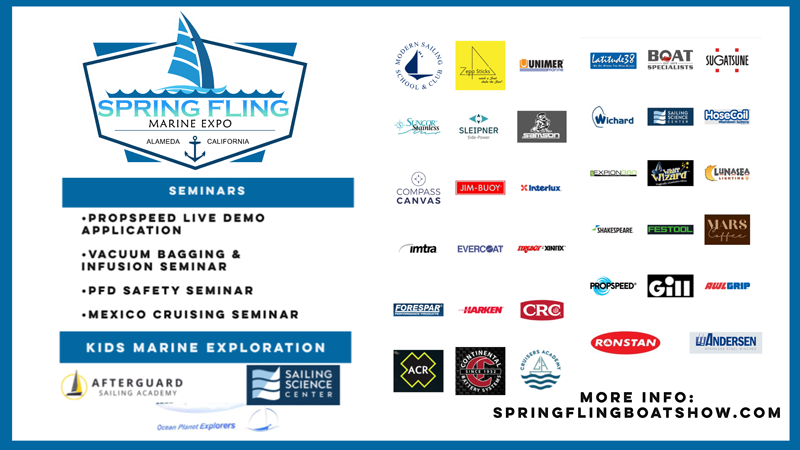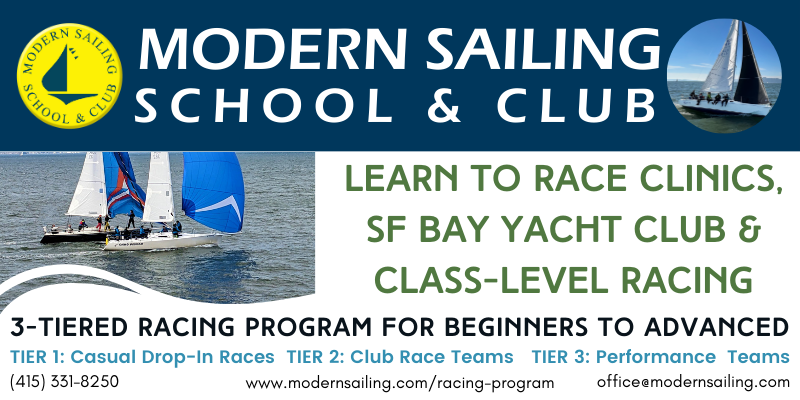
Hobbled Cargo Ship Destroys Francis Scott Key Bridge in Baltimore
In what will likely go down as one of the worst accidents in maritime history, the one-and-a-half-mile-long Francis Scott Key Bridge in Baltimore was demolished early Tuesday morning after an apparently powerless container ship struck a support column. At least six people are presumed dead, and a major interstate spanning the Patapsco River linking to one of the East Coast’s largest ports has been severed indefinitely.
It’s still not clear why the 985-ft container ship Dali — owned by the Singapore-based Grace Ocean Private Ltd — was hobbled and apparently drifted into the Francis Scott Key Bridge. The Dali had just departed from the Port of Baltimore when it lost power and issued a mayday call, according to the New York Times. “Radio traffic from emergency workers suggested that the crew was struggling to steer the ship, according to audio published by Broadcastify. Most of the lights of the ship went dark abruptly, just over two minutes before the ship hit the bridge.”
Investigators have retrieved the vessel’s voyage data recorder, or the “black box,” and hope to create a timeline of events, the Times said. Maryland governor Wes Moore said there were no indications of terrorism or a deliberate attack on the bridge.
There will be long, protracted investigations, lawsuits and years spent in court trying to adjudicate blame for and seek remuneration for this horrifying accident. There are already questions about the labor practices of the shipping company and the fail-safes around the bridge itself — as well as protection on other bridges around the country, especially here in the Bay Area. Speculation, finger-pointing and a few conspiracy theories will no doubt fill the vacuum in the absence of facts.
Even when a timeline is established and the exact causes are known, what remains will be a tragic loss of life, the severe impairment of a major transportation hub, and the catastrophic, unfathomable loss of major infrastructure.
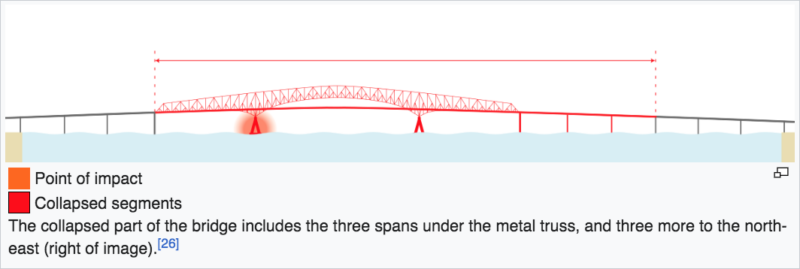
The vessels belonging to Grace Ocean Private Ltd “have been cited in recent years for labor violations, which include underpaying ship crews and holding crew members onboard for months past their contracts, according to the Australian Maritime Safety Authority,” the New York Times reported. One Grace Ocean ship was detained in 2021 because “management was in arrears paying 13 crew members and had kept them on the ship for more than 12 months.” Another ship reportedly had had 10 seafarers aboard for more than 14 months.
The infractions were “serious and shameful violations of an international convention on maritime labor,” an Australian official said in 2021. “This type of behavior is unethical and in complete contravention to the Maritime Labor Convention,” the official was quoted as saying. “The international conventions that protect seafarers’ rights are very clear.”
“The extremely opaque nature of global ship-owning makes finding the ultimate owners and holding them accountable for any violations difficult,” the Times wrote. The lineage of ownership for Grace Ocean is a rabbit hole of companies based in the British Virgin Islands and Hong Kong.
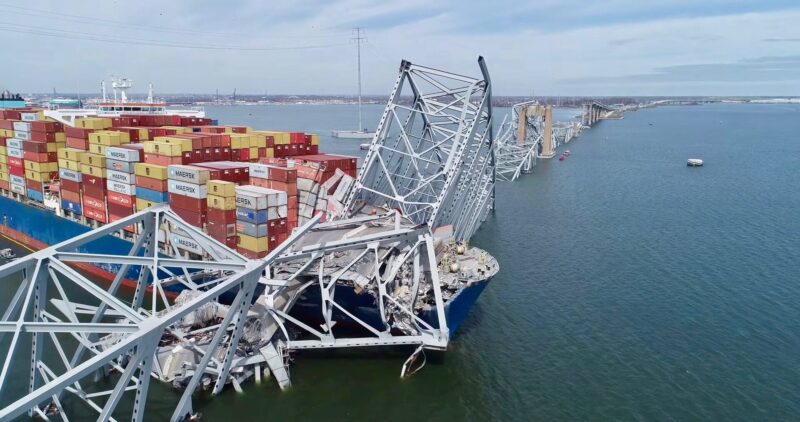
The New York Times said that there were “no obvious fender system” around the supports of the Francis Scott Key Bridge, and cited photos of other structures that had rock walls, island barriers or large “fender walls” (our term) to create a safety buffer between a potentially wayward ship and the foundation of a bridge.
SFGATE reported that the Bay Area’s major bridges all have systems in place to protect them from collisions with ships. The Golden Gate Bridge “has the most robust protection system of any bridge on the West Coast,” a spokesperson from the state agency that manages the bridge told SFGATE. Readers will no doubt recall when the Cosco Busan struck the Bay Bridge in 2007 and spilled more than 53,000 gallons of oil.
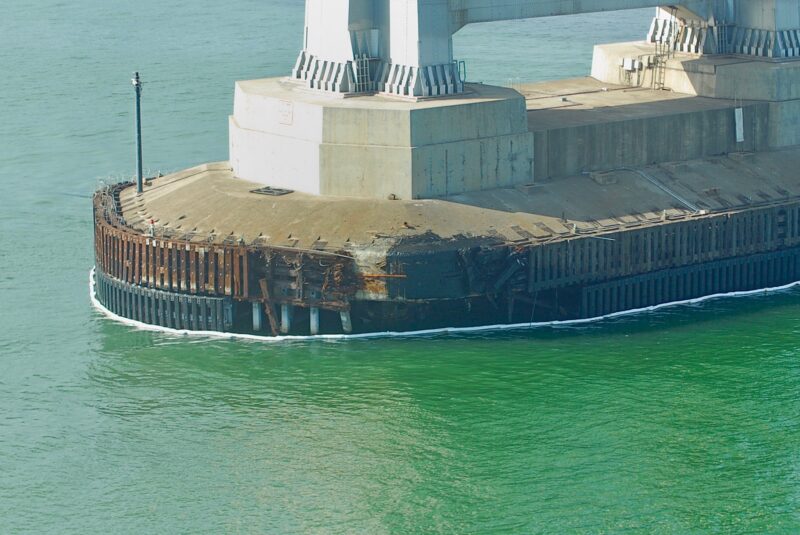
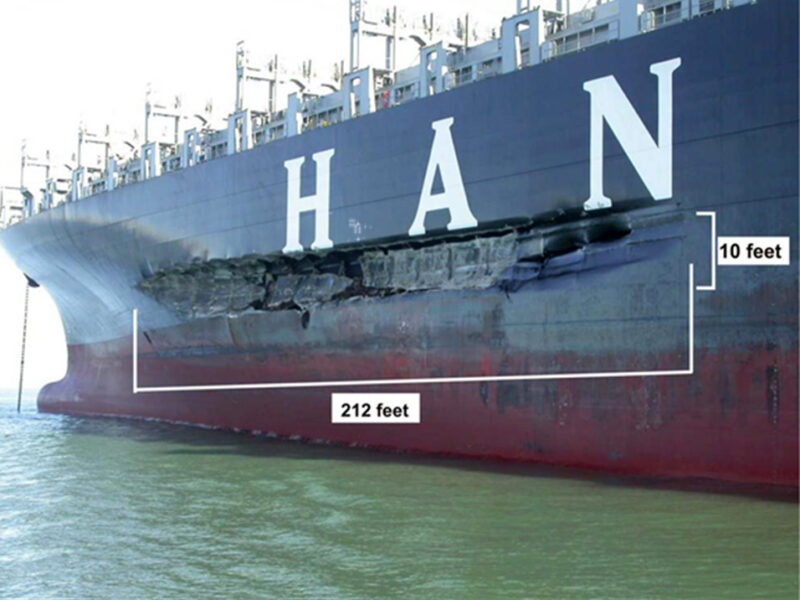
Want to make a friend smile? Give them a gift subscription to Latitude 38.
Good Jibes #135: Hans Henken on Paris Olympics Prep
This week’s host, Moe Roddy, is joined by returning guest Hans Henken, a world-champion sailor who can now add Olympic qualifier to his résumé. Hans is at the height of his Paris Olympic campaign. While it’s an incredibly exciting time, it hasn’t come without setbacks.
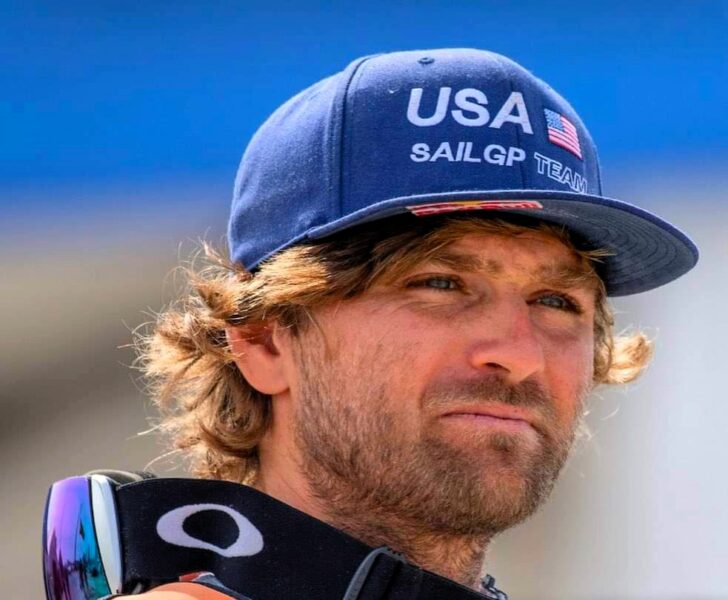
Hear Hans share his recovery from his SailGP accident, what kind of workouts are needed to be in Olympic sailing shape, and how you can help with his Olympic campaign.
This episode covers everything from this year’s Olympics to injury rehab. Here’s a small sample of what you will hear:
- What is a Sabot?
- Where is Hans’s favorite surf spot?
- What did he study at Stanford?
- When did he start sailing Moths?
- How did he meet his partner, Ian Barrows?
- Who has more control over the boat?
- What kinds of workouts does Hans do?
- Short Tacks: Why pursue the Olympics?
Learn more and donate directly at BarrowsHenkenRacing.com/Donate.
Listen to the episode on Apple Podcasts, Spotify, and your other favorite podcast spots — follow and leave a 5-star review if you’re feeling the Good Jibes!
Mark Your Calendar for Svendsen’s Spring Fling April 12/13!
Get your tickets today! More info at www.springflingboatshow.com.
News From Our Dock Box of Sailing Bits and Pieces
Rummaging through the dock box we found a few more news gems from the week. It starts with some big kids racing pro in SailGP and finishes with small kids starting youth sailing at SEA.
Dolphin Strikes SailGP
SailGP closed out its Southern Hemisphere season with only one full day of racing in New Zealand after dolphins took over the course on Saturday, causing organizers to cancel the opening day’s schedule. A dramatic day of racing followed on Sunday, which saw series leader Tom Slingsby steering into a mark to avoid a collision with Canada. The Aussies avoided injuries to the crew but not to the boat. It was a series-ending crash for Australia, leaving the home team, Black Foils New Zealand, to take top position for the weekend and the overall series. Taylor Canfield and TeamUSA continued with their learning curve, finishing in eighth place after the Sunday-only event.
SailGP now heads to race in the Northern Hemisphere, starting in Bermuda on May 4-5.
Watch the New Zealand race summary here:
Express 37 Crew List/Crew Training
Riding the rails used to be the life of a hobo, but it’s way more fun and has a lot more variety if you start riding the rail of an Express 37.
And who says they can’t find rail crew? Drew Harper of Spinnaker Sailing San Francisco worked with the Express 37 fleet to create a free development day for future Express 37 crew. They are at capacity for the participating boats, with 27 prospective crew signed up. If you need crew, or want to be crew, visit the Latitude 38 Crew Page. Sailor Yosh Hahn signed up on our crew list in 2018 and has since sailed 15,000 miles. She has a story in the upcoming April issue. Warning: You do risk getting wet!
Sequoia Yacht Club Is a Beer Can Racing Early Bird
Sequoia Yacht Club in Redwood City took immediate advantage of daylight saving time to start their Wednesday evening beer can series on March 20. The first night was blustery. The club’s race organizer, Peter Weigt, reported, “I’m not sure about you, but I’m still recovering from the baptism by fire from last Wednesday (and this weekend)! Man, that was more wind than Anja and I had bargained for! I want to personally thank all the boats participating in the ‘Oceanographic Seafloor Research’ conducted around 12 and the channel. Your checking the accurate depth with your keels is greatly appreciated. Joking aside, I hope you all had fun! Shall we do that again? I hear you scream: ‘YES!'”
Sequoia YC is holding their second beer can race of the season this evening. They have over 30 boats signed up, with a PHRF class and one-design classes for Open 5.70s and Merit 25s. Results from last week are here.
The 14th Annual West Coast Multihulls “Sea of Cortez Rally Around the Islands of Loreto” Is Coming May 5-9.
It is a BYOB event: Bring your own boat. Includes local cruising with potential fleet anchorages in Bahia Salinas, Playa Blanca, Isla Montserrate’s Yellowstone Beach, Agua Verde, and/or Honeymoon Cove, plus a Cinco de Mayo “Meet and Greet” at Marina Puerto Escondido. A $100 registration fee applies. Learn more here.
Sailing Education Adventures Classes Open 40th Season With a Historical Look at Its Road to Recovery
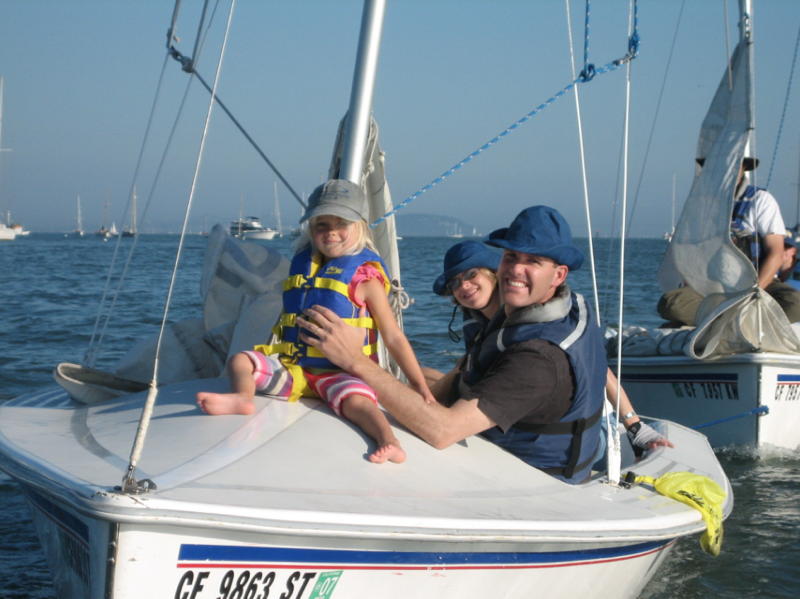
Sailing Education Adventures (SEA) is the Pacific Coast Yachting Association’s 2023 Garrett Horder Trophy recipient. SEA founder Jane Piereth was among the honored to represent and receive the trophy, but two decades ago the now 40-year-old community- and youth-sailing organization was on the ropes and struggling to survive. Barbara McVeigh and her husband Mark Miglio stepped up in 2006 to pull together a community of volunteers and continue its now affordable, accessible and award-winning youth and adult sailing programs. Barbara shared their story on SEA’s website.
Now is the time to sign up kids for SEA’s youth programs, which operate out of Loch Lomond Marina on the San Rafael Canal.
There’s so much more sailing ahead and we’re looking forward to sharing it all (well, as much as we can). To keep up, pick up our monthly print publication at a distributor near you — listed here. The April issue comes out on Friday!
When Was the First Beer Can Race?
With most beer can racing starting in April, Richmond Yacht Club sailor John Dukat was curious about when the first beer can race might have been held. The internet wasn’t much help, though he did uncover a couple of fun facts:
According to a 2008 story in the Los Angeles Times, the beer can races are named for the “bobbing pop-top cans that once marked the course,” adding that the races had been a part of the local sailing scene for at least 50 years. The story goes on to report that during the more recent beer cans, sailboats were being stopped, mid-race, by Harbor Patrol officers who claimed the boats were exceeding the harbor’s 5 mph speed limit.
John also discovered the origin of the actual beer can itself. The “find an answer to obscure questions” website Mental Floss says beer cans evolved in the early 1930s (just before the end of Prohibition) when the American Can Company and New Jersey brewers Gottfried Krueger Brewing Company put 2000 cans to the test with their Krueger’s Special Beer. According to Mental Floss, 91% of the drink-test-dummies, gave the 12-ounce canned brew “rave reviews.” Apparently the 3.2% alcohol beer outshone the usual bottled beers with a taste closer to the draft beer everyone missed. The cans were also a winner in the financial stakes, with reduced shipping costs and because the cans didn’t require close inspection for their reuse.
Earlier attempts at beer cans had been made by Pabst and Anheuser-Busch in the 1920s, but the introduction of the 18th Amendment (the forerunner to Prohibition) put an end to their plans.
In fact, the beer can was so successful that in addition to giving birth to fun, casual sailboat racing, the beer can has its own official calendar date — Beer Can Appreciation Day. We missed this year’s; it always occurs on January 24. But now that we know, it’s on the calendar for 2025.
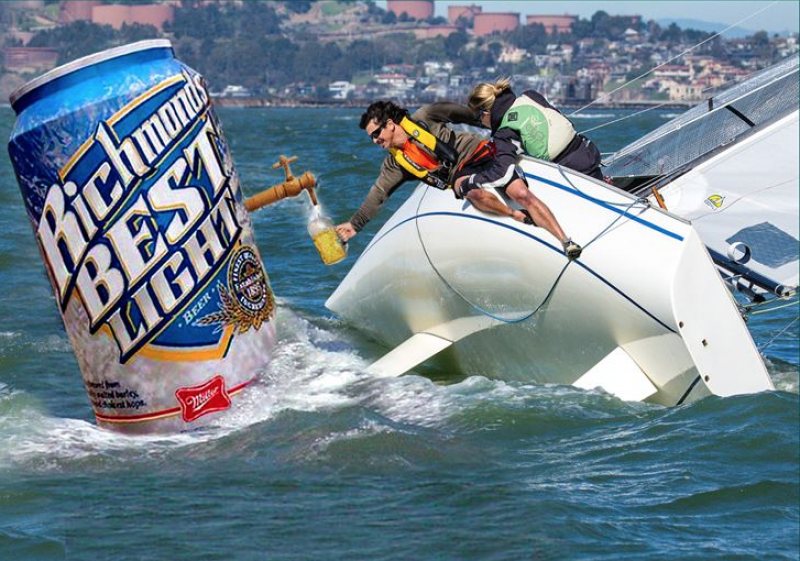
Here on the Bay, beer can racing is a well-loved summer pursuit. And while most Bay Area “Beer Can Racing” starts in May, it should be noted that the dedicated sailors at Berkeley Yacht Club run theirs from 3/15 to 9/27, and Coyote Point Yacht Club from 3/3 to 10/23.
You can look up all the Bay Area beer can races in our Northern California Sailing Calendar here. Sail more by signing up for one near you.
Read up on the beer can “rules” before you get to your next start line.
Learn to Race with Modern Sailing
Get on the water and race with confidence by taking Modern Sailing Racing Clinics for all levels from beginner to advanced. Learn more: www.modernsailing.com/racing-program

